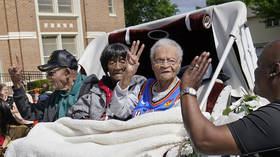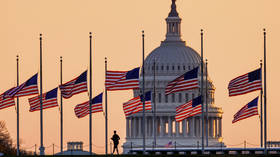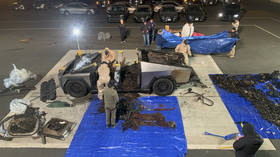Oklahoma judge tosses race reparations lawsuit

A judge has dismissed a lawsuit brought by the last three survivors of the Tulsa race riots, who argued that the city never adequately compensated them for the burning down of its black business district in 1921.
Judge Caroline Wall dismissed the suit with prejudice on Friday, meaning the plaintiffs cannot launch another legal attempt at gaining reparations.
The three survivors, ranging in age from 102 to 109 years old, filed the suit in 2020 at the height of the nationwide George Floyd protests, quickly gaining the attention of the media and Democratic lawmakers. While the suit did not specify how much money they were seeking, it argued that all three deserved some measure of “justice in their lifetime.”
Citing Oklahoma’s public nuisance laws, the survivors’ lawyers argued that city authorities and insurance companies never paid out enough money to rebuild Tulsa’s black business district following the 1921 riot, resulting in social and economic inequalities that persist to this day.
Wall’s order stated that the survivors had not identified a “legally cognizable” remedy, and that the issue of reparations was for politicians, and not courts, to decide.
The Tulsa race riot – alternatively referred to as the Tulsa Race Massacre – began when a black teenager was accused of sexually assaulting a white woman in an elevator. Tulsa was racially segregated at the time, and labor competition between blacks and whites contributed to a tense atmosphere in the city. Following the teenager’s arrest, dozens of black military veterans took up arms and went to the city’s courthouse, anticipating a possible lynching by a hundreds-strong white mob which had already assembled at the building.
Scuffles broke out, followed by gunshots, and by the following morning, gangs of white and black men were engaging in shooting battles across the city. Within hours, the whites had burned down the 35-block Greenwood neighborhood, at the time one of the wealthiest black neighborhoods in the US.
The National Guard were called in to quell the violence, and martial law was imposed. By the time the riots ended, 26 black and 13 white people were dead (according to 2001 figures) and 10,000 Greenwood residents were left homeless.












